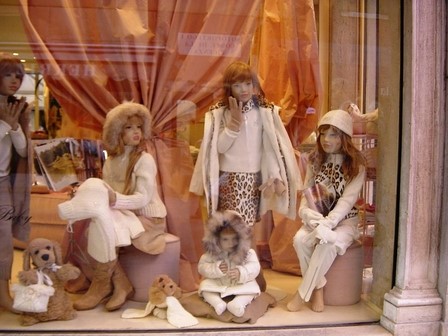Outlook on the 2011-2021 Trends
I wrote the article below in 2011. As 2021 comes to an end, let’s consider how the last decade turned out.
Luxury fashion designers expand to emerging markets while western fashion culture tends to introspect. The best might yet to come.
Halfway through the ten-year outlook, will we return to what was happening five years ago when a new era in fashion culture began when luxury labels appeared in retail chains. Sonia Rykiel and her lingerie and sweaters for women and girls at H&M, and Alexander McQueen’s collection for Target were among the first. After all, what is left of a designer’s name when counterfeited and outlet cheaply-produced luxury goods have tarnished or saturated a brand’s appeal? Besides, has the recession not encouraged a more creative personal style? Today, Western catwalks no longer get the lion’s share.
Designer Labels Open in Asia
Armani is setting up shop in Vietnam following a skyrocketing demand for designer goods. The Italian designer label offers its tailored suits in a classy minimalist boutique in Ho Chi Minh. Armani went way out to Ulan Bator, the capital of Mongolia.
With profits dropping in the recession-hit traditional fashion markets of America, Europe—8% drop in the UK for example—and Japan, luxury goods seek new frontiers. According to McKinsey’s research, by 2015, China will represent 20% of global luxury sales, Chinese fashionistas preferring internationally known brands.
Meanwhile, in the West, some call it recession while others perceive fatigue in following the traditional fashion-inspiring media and medium.
London-inspired Street Fashion
Fashion is one of many social criteria that define a sophisticated society, while clothing is a reflection of any culture. Most consumers cannot afford Haute Couture, but ‘haute fashion’ has always trickled down to the streets, with a twist on trends. London holds the flagship with its British free-spirited knack for self-expression. “Where there is a fashion will, there is a fashion way,” says Kate Spicer in issue 45 of the UK magazine Stylist.
According to Stylist, a survey by Draper—the fashion industry bible—indicated that 89% of 50,000 fashion industry professionals consider Oxford Street as the best place in the world for affordable fashion stores. The point is, where there is demand, there is supply. And when there is supply, individuality takes off.
Furthermore, there more merit in ‘haute fashion” than Haute Couture. After all, it is effortless and ‘safe’ to wear designer labels, whereas creating a personal style on a budget shows character and vision. Besides, the wariness about labels might be a matter of awareness, designers manufacturing cheaply in the Far East then selling expensively in the West.
This could be the key to the new trend: reality fashion. Hello, Lady Gaga…! And so, the maddening fashion week on the runways might lose its appeal in favor of fashion gathering and hunting at affordable shops, consignment stores, and other vintage outlet for street fashion.
H&M Brand Fashion Research
Fashion trend researchers watch the news, read financial magazines, analyze life on the streets, collect information from various industries, and eventually sort it out to keep what is inspiring. Finally, they interpret common signals to get a trend direction. As a result, even climate change can influence fashion.
According to the H&M Magazine 2010 edition, times have changed because today “trends can come from anywhere.” Whereas in the 60s Paris fashion houses dictated a season’s fashion, and in the 90s a concert or a celebrity hairstyle could start a trend, social media are now propelling trends globally, from anywhere and to anyone.
Celebrities might still have influence, but red carpet events might be more about the curiosity of who dares to wear what than a geniune interest in fashion trends. Fashion is even migrating into a blurred philosophical concept. Anna Laub, trend analyst at the London-based WGSN agency, expects next year’s trend to be about “fashion that looks extremely real, yet with a surreal quality. We call it ‘hype false realism,’” she says… Even expert trendsetters appear to be at a loss to express the current phenomenon.
Projection of Fashion Trends for 2011/2021
H&M Magazine predicts the following trends for 2011/2021, a clear and welcome evolution towards common sense:
- Power comeback: Career look returns with long urban skirts, tailored dresses, blazers, and capes.
- Organic tailoring: Inspired by climate change, mismatches, work-wear, and dark colors will be combined in a folkloric tailored look.
The upcoming ten years suggest a renaissance of “real” reality. Science will help the planet and bring much-needed optimism from new findings, generating the following trends from 2011-2021:
- Discreet luxury: Return to craftsmanship and rejection of the “bling” culture of the 00s with discreet luxury items.
- The serious generation: The children of the 90s will become smarter adults and focus on homes and careers leading to a boom in interior design and conservative career clothes.
And so, “reality fashion” could mean what it suggests, which Mark Jacobs endorsed in his last collection inspired by curvaceous Mad Men star Barbara Hendricks. “I wanted to go back to the era when it was glamorous simply being a woman […] You could just sit there in a beautiful dress and gloves and that was enough.”
Most of all, it’s comforting to hear that our grandchildren will buy less but better and will focus on their home. Will big walk-in closets be out? To be continued.
Sources
- H&M Magazine. Winter 2010. Lee Madison: “Tomorrow’s Trends Today.”
- Mckinsey Quarterly online. Tapping Chinas’ luxury goods market. April 2011.
- Stylist Autumn-winter 2010. Collector’s Edition. “Outspoken” by Kate Spicer.
- WGSN: Global Trends forecaster for the apparel industry
First published April 2011 Suite101.com

